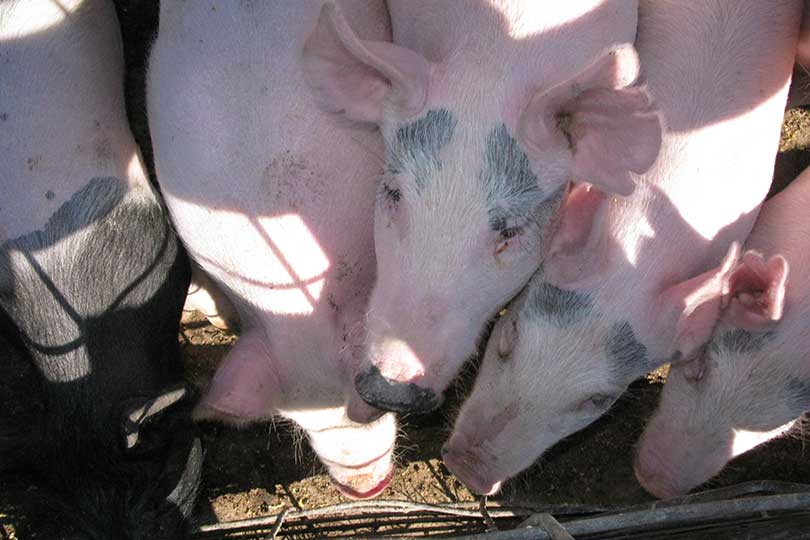The U.S. hog herd rose 2.4 percent from 2015 to nearly 71 million head as of Sept. 1, according to a U.S. Department of Agriculture report released on Sept. 30. This is the highest ever on record for the month.
The market is saturated and slaughterhouses don’t have enough capacity to handle the increased numbers of pigs, according to PORK Network.
The pork supply glut is driving wholesale prices on hams, pork bellies, ribs and pork loins to the lowest prices since 2009, according to Bloomberg. Grocery store prices are also falling, benefiting consumers.
But the increased numbers mean slaughterhouses are over capacity. They are having to add shifts and operate on Saturdays in November and December to process them all, Will Sawyer, an Atlanta-based vice president for Rabobank International, told Bloomberg.
A factor driving the oversupply is an increase in the number of pigs farrowed per sow, according to Jim Robb, director of Livestock Marketing Information Center in Denver, Colo.
“The report indicates an average of 10.58 pigs farrowed per sow, and formerly we were at 10.49 pigs farrowed per litter. It doesn’t sound like a lot of difference, but it’s significant,” Robb told PORK Network.
Hog futures reflect the oversupply of hogs.
“Cash prices have been down almost every day since July, and that trend is probably going to continue,” Bob Brown, a meat industry consultant from Edmond, Okla., said in a teleconference sponsored by the National Pork Board immediately following the report. “The issue we’re seeing is that we’re bumping against slaughter capacity, which is driving prices down. He has averages for the rest of the year at $53, with an improvement in the first quarter of 2017 to $65.”
Chinese pork export demand has fallen significantly since May, according to Bloomberg. USDA data shows April exports exceeded 5,000 metric tons, but they fell below 1,000 tons in mid-September. China is the world’s largest pork-consuming nation.
USDA forecast a drop of as much as 5.5 percent for 2016 pork prices from last year.
Although prices are low, pork packers are still making profits because of high margins, according to Bloomberg. Margins are the highest they’ve been in three years at $52.20 a head, according to HedgersEdge data.
Those returns signal demand from the processors could help stabilize prices for hogs, Chad Henderson, president of Prime Agricultural Consultants Inc. told Bloomberg.
“It’s going to be a very difficult period of three or four months,” Brown told PORK Network. “We won’t back off capacity issues until January 2017. Producers just need to batten down the hatches and do the best they can.”

